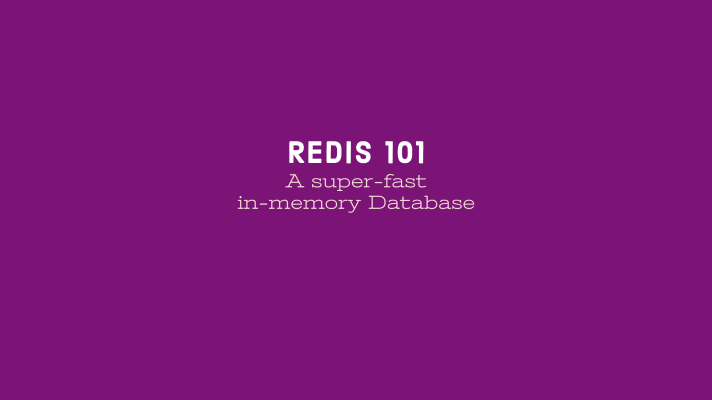Redis 101: A super fast in-memory database
 Shams Nahid
Shams NahidTable of contents

Redis is one of the fasted in-memory databases out there and very much different from the traditional SQL/no-SQL databases. Initially, it was developed for caching, but the simplicity and speed take it to a completed in-memory database.
Why Redis
When we compare this Redis database with a traditional database, it is similar in a way,
- Persist data for applications
- We run queries and fetch data
But it does the job super fast of storing and retrieving data on the database by using the computer memory.
Redis is a super-fast temporary database, that uses computer memory, not the HDD or any other permanent storage hardware
Redis is fast, because,
- All data is stored in memory
- Use a very simple and straightforward data structure
- Provides limited features for querying data
Redis narrowed down the data structures in it into LinkedList, hashMap, or set type structures.
So Redis is fast because it is simple.
Design Methodology
This simplicity brings a couple of challenges during we design a database,
- Fitting data in a limited amount of memory
- Make use of simple data structures to persist data
- Utilize the database with its limited feature set
Redis has the following data sets,
- String: Plain string or number
- List: List of strings
- Hash: Collections of key values
- Set: Set of unique strings
- Sorted Set: Set if sorted unique strings
- Bitmap: Kind of collection of booleans
- HyperLog: Kind of collection of booleans
- JSON: Nested JSON structure
- Index: Internal data, used for searching
It does also support concurrency with the watch and lock method.
For traditional databases, we design the database as follows,
- First, we persist data in tables or collections
- Determine what query we execute depending on what data we required
With Redis, we took the reverse approach,
- First, figure out what queries we will perform
- Design data according to that query
A couple of additional concerns with Redis are,
- Types of data we are storing
- Should we concern with data size (for example, static page/dynamic page)
- When do we expire the data
- How do we name the key
- Any consideration of business logic
Final Thoughts
When it comes to a super fast in-memory database solution, Redis can be a no-brainer. Apart from Redis itself, all the major cloud service providers have managed Redis service.
Subscribe to my newsletter
Read articles from Shams Nahid directly inside your inbox. Subscribe to the newsletter, and don't miss out.
Written by

Shams Nahid
Shams Nahid
A lifelong learner. Love to travel. Listen to music.